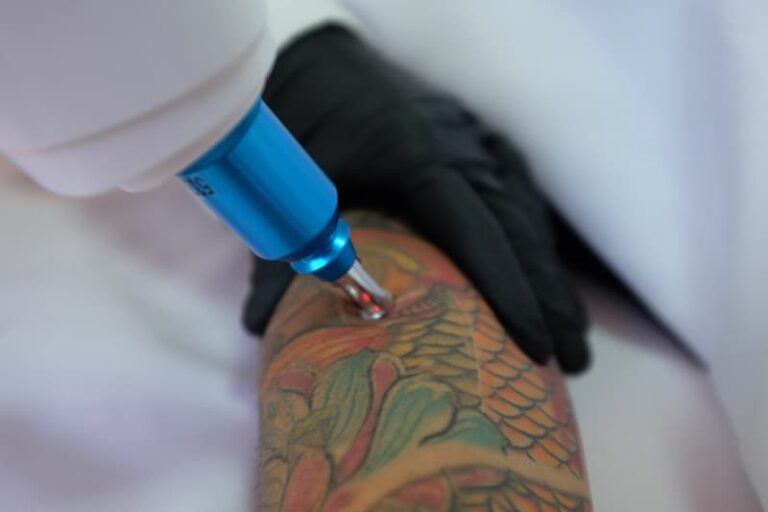Laser tattoo removal is one of the most popular methods for eliminating unwanted tattoos. While it's known for being effective, a common concern many people have is whether this procedure can affect the texture of the skin. Understanding how laser tattoo removal works and its effects on the skin's surface can help individuals make informed decisions before undergoing the Tattoo Removal Dubai.
How Laser Tattoo Removal Works
Laser tattoo removal involves using highly concentrated light beams to break down the ink particles that form a tattoo. The laser targets the pigments in the skin and breaks them into smaller fragments, which are then naturally absorbed and eliminated by the body. The intensity of the laser and the number of sessions required depend on various factors such as tattoo size, color, and location. Although laser tattoo removal is non-invasive and generally considered safe, its impact on the skin’s texture can be a topic of concern. The laser energy can cause heat to penetrate the skin, which might trigger certain skin responses, especially when the procedure is done multiple times.
Understanding Skin Texture and Laser Interaction
The texture of your skin refers to how smooth, firm, or bumpy it feels to the touch. The outermost layer, the epidermis, plays a crucial role in maintaining the skin’s appearance and smoothness. When the laser is applied to the tattooed area, it passes through the skin's layers and targets the pigment in the dermis (the second layer of skin). During this process, the laser can cause micro-damage to the skin. While the body repairs itself, the affected area might temporarily change in texture as new skin cells regenerate. This process usually helps to restore the skin’s normal appearance, but the outcome can vary depending on several factors, including the skin's resilience and the tattoo's location.
Effects of Laser Tattoo Removal on Skin Texture
In most cases, the skin’s texture is restored once the healing process is complete. However, the degree of impact on the texture largely depends on the depth of the ink and the intensity of the laser used. Here’s how it can affect the skin:
Temporary Changes in Texture
Immediately after laser tattoo removal, it's common for the treated area to appear slightly red, swollen, or inflamed. These are temporary reactions as the body responds to the laser’s heat and begins the healing process. The skin might feel rough or have a raised texture initially, but this usually fades as the healing progresses.
Skin Tightening and Smoothness
For many, the skin around the treated area can experience a tightening effect as it heals. This happens because the laser stimulates collagen production, which is a vital protein for maintaining skin’s firmness and elasticity. The result is often smoother skin after the tattoo fades, especially if the skin was relatively healthy to begin with.

Scarring and Textural Changes
While scarring is rare with professional laser tattoo removal, it is a possibility if the skin is not properly cared for post-treatment. In rare cases, the healing skin can develop small bumps or a slightly different texture due to excessive heat or an improper healing process. However, this is usually preventable by following aftercare instructions diligently.
Factors Influencing Skin Texture Post-Treatment
There are several factors that can influence how your skin will look and feel after laser tattoo removal. These include the type of tattoo, the depth of the ink, the number of sessions, and how well you follow the healing protocol.
Tattoo Type and Ink Depth
Tattoo characteristics play a role in how the skin reacts to laser removal. Tattoos with deeper ink penetration are harder to treat and may result in more significant changes to the skin’s texture during healing. Lighter tattoos, or tattoos with ink on the surface of the skin, are generally easier to remove and tend to cause fewer texture-related issues.
Healing Process
Following the correct aftercare procedure is essential to maintain the skin’s natural texture after treatment. This includes keeping the treated area clean and avoiding sun exposure, which can cause pigmentation issues and affect the skin's healing process. The more diligent you are about taking care of your skin after each session, the less likely it is that texture changes will occur.
Long-Term Effects on Skin Texture
Once the laser tattoo removal process is completed and the tattoo has been successfully removed, most people experience a return to their normal skin texture. In some cases, people may even find their skin feels smoother and firmer due to the collagen stimulation from the laser. However, it’s important to remember that the laser doesn’t always leave the skin completely untouched. While visible scarring is uncommon, some people may notice slight changes in the texture of the skin after multiple sessions, especially if the tattoo was large, had multiple colors, or was located on delicate areas like the face or hands.
Skin Care After Laser Tattoo Removal
To avoid altering your skin's texture and ensure the best healing, it's crucial to follow proper skincare recommendations post-treatment. Protecting your skin from UV rays is one of the most important steps in preventing long-term texture changes. Regular moisturizing and gentle care will also help your skin regenerate properly and maintain its smooth texture.
Conclusion
Laser tattoo removal in Dubai is a highly effective procedure for eliminating unwanted tattoos, and while it may cause temporary changes in skin texture, these effects are typically short-lived. Most individuals find that their skin returns to its natural, smooth texture after the healing process, and the treatment can even promote skin tightening and firmness due to increased collagen production. Understanding the potential for minor textural changes can help you make an informed decision about the procedure. With proper aftercare and attention to healing, the impact of laser tattoo removal on skin texture can be minimized, allowing you to enjoy clearer, smoother skin after the tattoo fades.






Comments